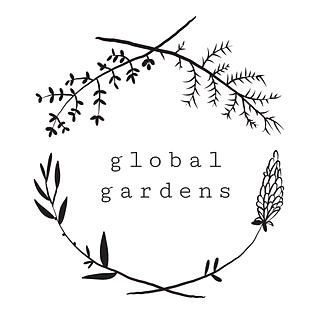EDICULTURE #1
- Global Gardens
- Apr 12, 2022
- 4 min read
Updated: Apr 13, 2022
12.April.2022
This spring we are collaborating with Ediculture with Stephen Watts to deliver an 8-part course on the edible culture wheel. Ediculture or Edible-Culture, according to Stephen:
"is about the various ways we can empower ourselves through foraging, growing, redesigning, and educating ourselves about the sources of where our food and medicine come from. The sessions will be a space for connecting people and sharing knowledge, a vital part of making community ."
The course is frameworked around the 8 directions, and the wheel of the year:
wild food and foraging skills (wilding/east)
organic horticulture (growing/south east)
Permaculture (place and placing/south)
Seasonality (time and timing/south west)
Nutrition (nourishing/west)
herbal medicine (medicating/north west)
Community food growing- working with others (communicating/north)
Nature connection (dreaming/north east)
The first workshop of the Ediculture Course on Sunday was all about wild food and foraging...

Silver birch
We began the workshop with a meeting with the Silver birch tree (Betula pendula). Known as a "pioneering" species, Silver birch is capable of growing in hostile conditions, including on bare land as well as on fire-swept land. It was one of the first trees to grow in the British Isles following the retreat of the ice caps. As a tree, it creates more hospitable conditions for other plants to grow with dappled shade offered by its canopy and the alkalising effect it has on soil. It also has close relations with hundreds of fungi species, including Birch polypore (Fomitopsis betulina) and Tinderhoof (Formes formentaris). As the first tree in the Celtic tree calendar, it is connected with birth and is also identified as a symbol of purity and renewal. Various parts of the tree have been and are still used medicinally - including the bark, sap and leaves.
Birch tapping is a practice connected with the Spring Equinox, when the sap is rising and the tree is just coming into bud. At the workshop, Stephen showed us how we can use a drill to cut a small hole into the bark - just enough to reach the xylem, where the flow flow of the sap is found. You can also cut a branch and harvest sap as it drips or make a small cut to the trunk. It is a slightly invasive practice, and we learnt how we need to approach birch tapping gently, only tapping via one hole from the same tree every few years.

Wild greens
After connecting with the Silver birch, we then turned to ground level and met some of the most familiar foraged wild greens including Nettles (Urtica dioica), Common Hogweed (Heracleum sphondylium).and Wild Garlic (Allium ursinum).
Nettles
Nettle leaves are high in vitamin (including A, C and K) and minerals (iron, calcium, magnesium and potassium). Young leaves harvested before they go seed can be decocted, simmered for 15-20 minutes to create a mineral-rich, blood-purifying tea or cooked into a soup. Nettles also have a diuretic effect.
Common hogweed
Named due to its use as a feed for pigs, common hogweed shoots are considered a spring delicacy amongst foragers and are said to taste a little like asparagus. Not to be confused with Giant hogweed (Heracleum mantegazzianum) which can cause phytophotodermatitis.
Wild garlic
Found growing in woodlands in the spring, wild garlic is in the allium family. The leaves and flowers are edible raw and cooked and the leaves particularly have beentraditionally used in spring as a blood-purifying tonic. Like garlic it also has anti-fungal and anti-bacterial properties due to its high sulphur contents. It can also support digestion.
After harvesting some of these wild greens, we returned to base camp to cook up some of our forage. We made Wild Garlic Pesto, Hogweed Fritters and Laver Burgers with some locally foraged Laver (Porphyra umbilicalis) - a local delicacy here in South Wales. Here is the recipe for Wild Garlic Pesto:

Wild Garlic Pesto
Large handful of wild garlic, roughly chopped
2-4 tablespoons of olive oil
50g toasted sunflower seeds
Pinch of salt
Blitz in a blender until a smooth paste. Enjoy!
Meeting the bulrush

On our wild walk around the land at Coed we also explored some lesser-known edible weeds: including Burdock (Arctium lappa), Jack-by-the-hedge (Alliara petiolata), Cleavers (Galium aparine), Wild violets (Viola odorata), Evening primrose (Oenothera biennis), Herb robert (Geranium robertianum) and even Bulrush (Scirpoides holoschoenus).
Wild Plant ID
After our foraged feast cooked on the fire, we then went on a walk where we were invited to identify one wild plant and three unknown plants. As a group, we shared our specimens and collectively identified a range of plants including many of those that we had met earlier in the day and some we had not.

What is wild?
The workshop ended with a lively discussion about understandings of wild food. The group agreed that "wild" is a tricky term with many potential meanings and interpretations. We generally agreed that "wild" means not intentionally cultivated. Some in the group also felt that defining a term such as "wild" can also create a sepapration or disconnect. Stephen highlighted how all of the food we now consider as 'cultivated' derives from wild food.
Our homework was to go out and take a few friends on a wild food forage. We encourage you to do the same! We highly recommend the 'Eatweeds' website as a great resource for wild food recpes and wildfood ID as well as the Ediculture resources on wild food.
The Ediculture Course is kindly supported by the National Lottery Community Fund in Wales 'Together for Our Planet' Programme.


















Comments